Have you ever been planning to go camping in Oregon only to find out that there were no reservations available? 😅
Yeah, we’ve been there too…
In fact, there have been times when we decided to scrap the camping plans and head out on a beautiful day hike near Portland instead.
Camping in Oregon is one of our favorite ways to experience our state’s beautiful scenery. But it can also be a huge challenge to find the perfect spot.
Or, at least, it seems that way.
Thankfully, we’ve learned some great tips and tricks over the years to ensure we can go camping in the Pacific Northwest any time – even if it looks like there’s nothing available.
Whether you live in Oregon or are planning a trip, we’ve pulled together everything you need to know in this guide to camping in Oregon.
You know – so you don’t have to spend the best weekends of the year staying home because you don’t know where to look. 😉

Check out my top car camping essentials!
I’ve been using many of these items for years on car camping trips – and we still use most of them with our truck camper! Whether you are camping in a tent or an RV, these are some of my favorite brands and tried and true gear finds including:
Types of Camping in Oregon
Glamping
Look. I love being in nature.
But, I also love my “creature comforts.”
You know…like a comfortable bed. Or heat when it’s freezing outside. 🤷♀️
Sure, I love to get out there and go tent camping too. But, if I can be comfortable AND enjoy the outdoors – even better! 🤪
If you’re like me at all, that’s where glamping comes in.
If you’ve never heard of glamping, it’s short for glamorous camping and is precisely what you might imagine when you hear those words. Think camping with a little bit of luxury thrown in.
The level of luxury can vary widely, from a yurt with a raised mattress to a tiny house stocked with everything you would need in the middle of the forest.
Even if you don’t consider yourself a camper, you may find that glamping is the perfect balance of nature and comfort.
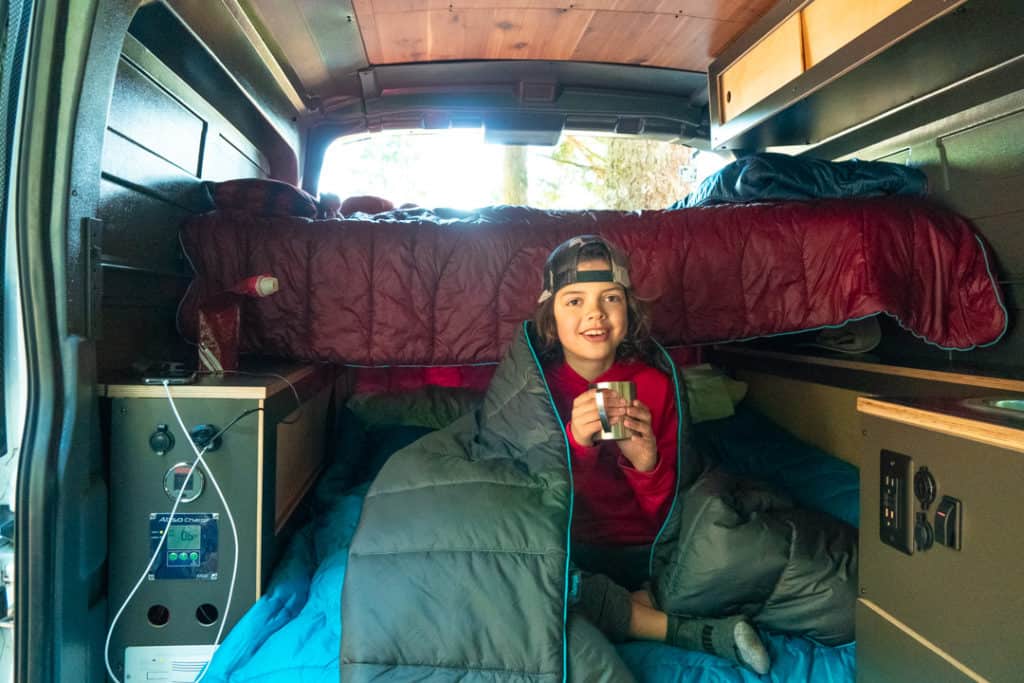
RV Camping
RV Camping takes place in a recreational vehicle of some kind. It could be a campervan, a motorhome, or many other variations. Oregon has options for RV parks along the Oregon Coast and beyond.
RV camping can be another great option when you want a few more comforts but still want to enjoy the great outdoors. One of the huge perks of camping with an RV is that you get to set it up exactly how you will be most comfortable and take it wherever you go.
If you’re curious about camping in an RV, there are plenty of options available, whether you’re looking to buy a large motorhome, a small RV for a family, or try out campervan life with a rental from ROAMERICA (let them know The Stoke Fam sent you for a free night with any 3+ night trip! Note: They are currently not accepting new reservations until Spring 2023 when their new fleet arrives), Wandervans, or Escape Campervans.
Tent Camping
Tent camping is another excellent option in Oregon. There are plenty of campsites from across the state so you’re sure to find something that suits your mood.
One of our favorite things about tent camping is how inexpensive it can be. Once you have your gear, a night at a campground is very reasonable. In fact, there are also plenty of free campsites as well!
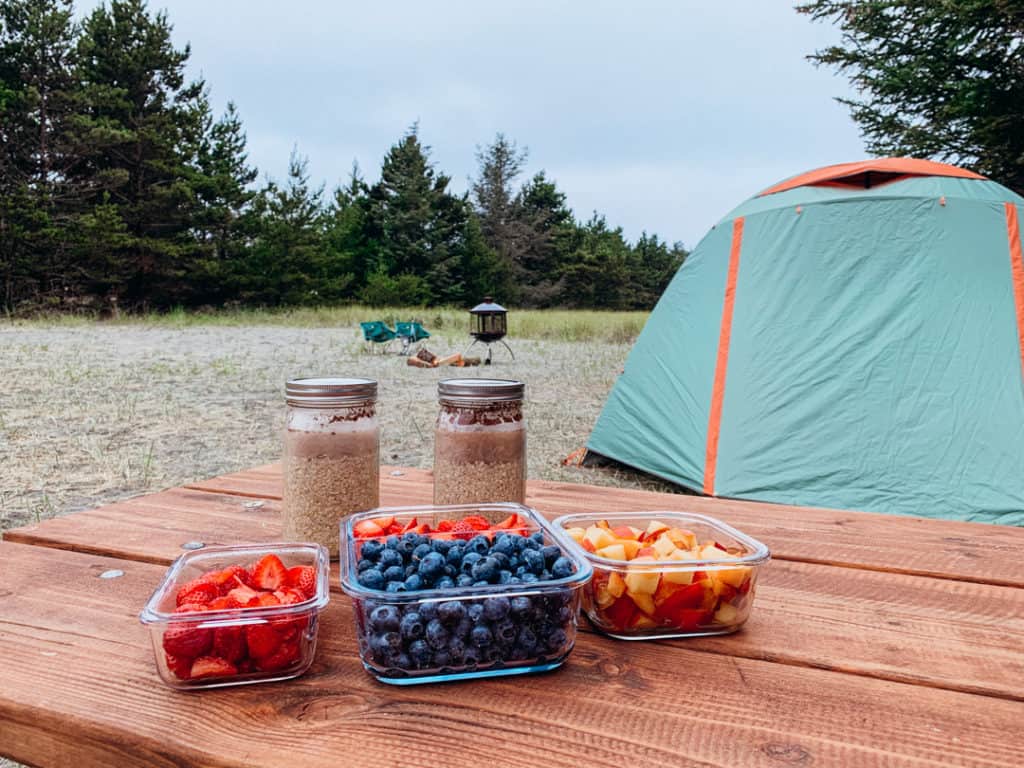
Free Camping
Yes, there’s even free camping in Oregon – meaning you don’t need to pay for your site. There are many ways to take advantage of the free camping available, including boondocking, dispersed camping, backpacking, and more.
Related: How to Find the Best (and Free) Campsites
Dispersed Camping
Dispersed camping is camping outside designated campgrounds, in places such as the National Forest. Because there is such a large portion of National Forest land across the state, the possibilities for dispersed camping in Oregon are huge.
One of the huge perks of dispersed camping is that it is free. However, keep in mind that comes with the loss of some amenities. When you choose to camp at a dispersed location, you will need to plan for your own bathroom and water needs, trash removal, and follow guidelines for the appropriate places to set up camp.
Boondocking
When it comes to boondocking, there can be a lot of different interpretations, but most of the time, it refers to “dry” camping in an RV. This essentially means that you must be fully self-contained, pack everything out, and house your own water and waste the entire time you are there.
Backpacking
There are a ton of great backpacking locations in Oregon. We know because we have about a bajillion of them on our list now that the boys are older. 😆
Check out the Forest Service and Bureau of Land Management for great ideas about where to start or explore one of the suggestions below.
Things to Know Before You Go Camping in Oregon
Aside from knowing basic camping etiquette and exactly what to bring camping, here are a few additional things you need to know about camping in Oregon.
Campfires
Spending evenings at camp around a cozy fire is one of our favorite things to do. In my opinion, you can’t beat s’mores, drinks, and great conversations that happen around a campfire.
However, at certain times of the year (generally during the hottest summer months through the first major fall rain), you may encounter fire restrictions. In fact, we had a recent scenario where we had to evacuate our campground late at night due to a shift in wind from a nearby fire that could have made our exit route impassable. Thankfully, we had done our research ahead of time, including checking in with the ranger and making backup plans, just in case.
Because of this, it’s important to check conditions, potential closures, and follow guidelines prior to your departure. Even though it may seem unlikely, in high-risk times, something as basic as an illegal campfire (Milepost 97 Fire), a single firework (Eagle Creek Fire), or even a lightning strike (Santiam Fire) can ignite a fire.
During the low-risk months, campfires are generally allowed with certain restrictions. Be sure to check the most recent campfire restrictions before you head out, as things can change rapidly throughout the summer months.
For current fire restrictions, check the appropriate source before you go:
Reservations
Reservations are the bane of my existence when it comes to camping. 😅
I love knowing that we have a site.
Especially when we’re sneaking out after work on a Friday. 😉
BUT, getting those reservations can be a little challenging, to say the least.
In the Pacific Northwest, campsites that allow reservations typically book up for the summer during the winter and early spring.
Yup. You read that right.
Many of our campgrounds operate on a 6 month rolling schedule, which means July bookings happen in January!
And, while I’m a pretty good planner, that’s pretty far in advance – even for me.
Sometimes we will get lucky and find a site after the early part of the year, but we have to be very flexible.
Our advice? If you have a particular site or campground you just HAVE to visit, book it as soon as possible.
That said, we have gotten lucky and scooped up cancellations closer to our dates as well, so it’s worth checking back frequently or try using a service like The Dyrt Alerts or Campnab to alert you when an opening comes up.
Thankfully, even if you can’t get a reservation, there are a lot of first-come, first-served sites as well. These can be a great option, especially if you can scoot out early Friday morning to grab one for the weekend.
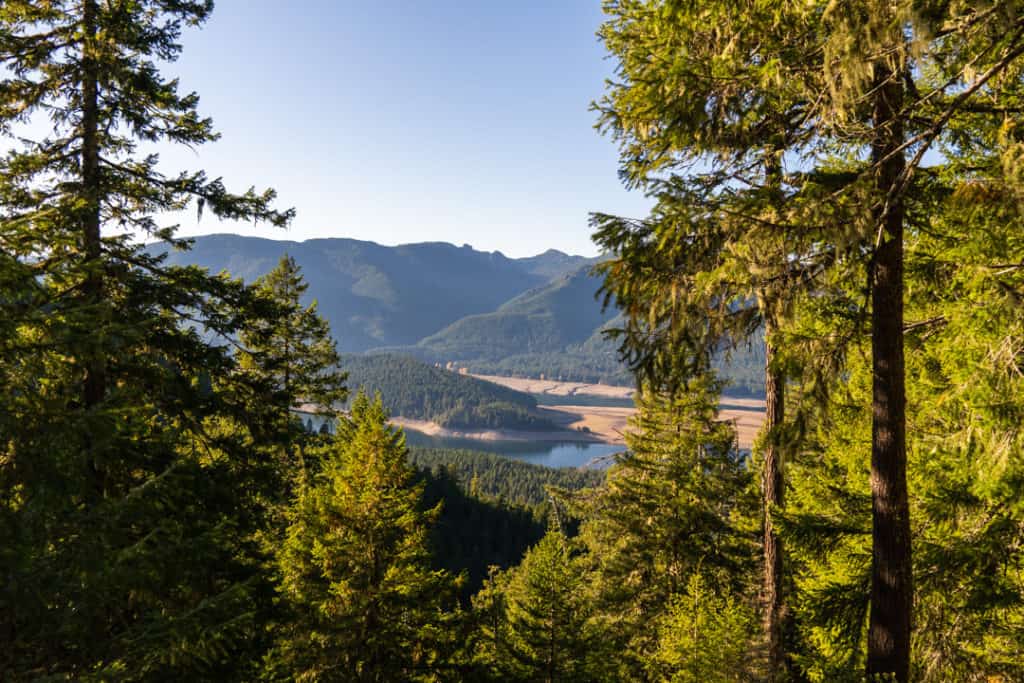
When we are looking for camping reservations, here are some of our favorite booking sites to check.
- Reserve America
- Recreation.gov
- Campendium
- HipCamp ← That link gives you $10 off your first booking. 😊
- Harvest Hosts – A membership that gives you access to unique host locations (think wineries and llama farms!) for a VERY reasonable fee. (Grab an extra 15% off your membership here.)
- The Dyrt
Learn more and find out how we use them to find unique (and sometimes free) campsites.
Be Responsible
Recently, while fall camping near Portland, we were walking on the lake bed of Detroit Lake (the level of the reservoir is usually dropped in the fall) and we kept finding trash. 😢
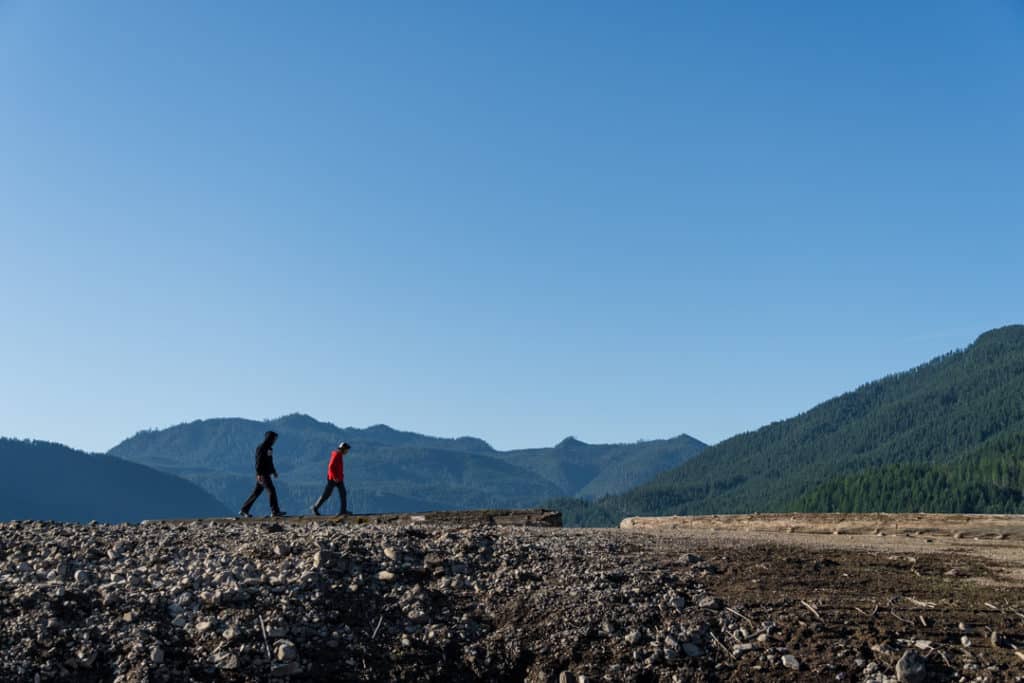
Our then 7-year-old took it upon himself to start collecting the trash and put it in the proper place. 🙌
We make it a point to emphasize the importance of leaving places better than you found them to our kids. Or, at a minimum, to leave no evidence that we were there. So we were incredibly proud to see him take the initiative and put into practice what he’s learned.
But, it’s incredibly disappointing when you head out to a quiet spot in nature, expecting to find a pristine escape, only to find mounds of trash. 😠
We encourage you to take a few minutes to review the Leave No Trace principles and do your part to keep our natural resources beautiful for future generations.
Camping Apps & Tools We’re Loving Right Now
- The Dyrt – Think of The Dyrt kind of like the Airbnb of camping. You’ll find reviews for campsites from real campers and you can book many campsites directly in the app. There is a free version or upgrade to PRO for maps to help you find free camping and exclusive discounts. Even better, they now have a feature called The Dyrt Alerts that helps you nap sold-out campgrounds by alerting you when a site opens!
- Campspot – Campspot is another great option to help you find and instantly book tent sites, RV sites, and cabins in North America. You’ll find reviews and can filter your results by various amenities such as boat launches, hookups, and more.
- Campnab – Campnab is a site dedicated to helping you grab sold-out campsites at popular locations. You set an alert for the location you’re heading to, and they’ll let you know when a spot opens up so you can act fast to nab it!
- Gaia GPS – Gaia GPS is our most used app for hiking and camping. It’s one of the first places we start our research, track our hikes, and navigate offline on forest service roads. It’s also especially useful for finding BLM and USFS land where we can camp for free. (Try it out for free.)
Where to Camp in Oregon
Oregon State Park Camping
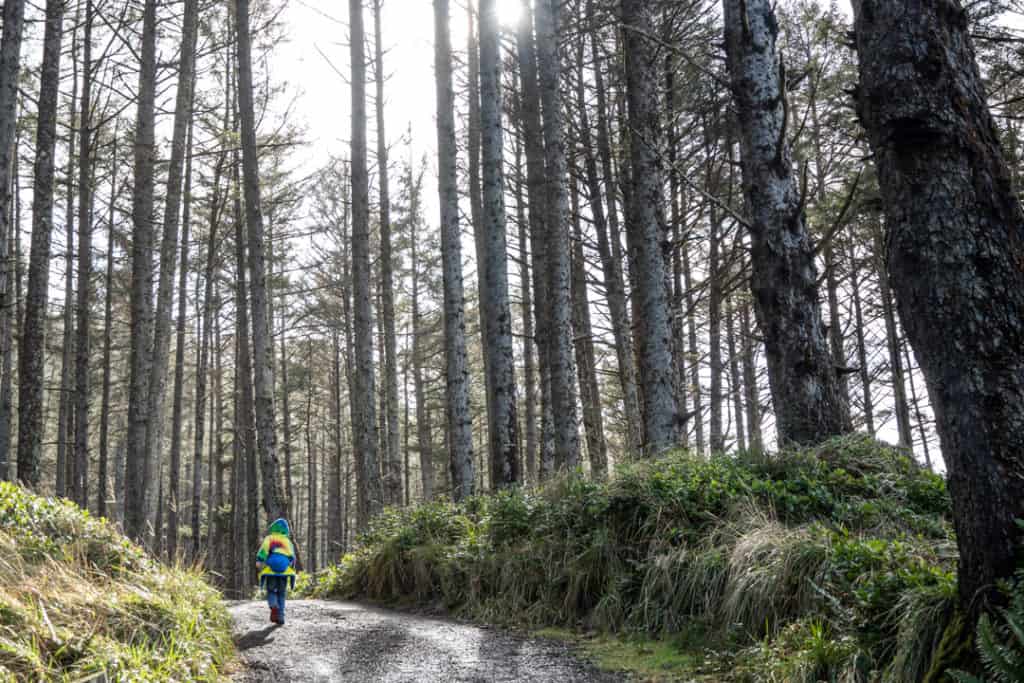
With over 50 campgrounds throughout Oregon, Oregon State Parks are excellent choices for camping. You’ll often find tent camping, RV camping, and some even have yurts or cabins you can rent.
Reservation info:
For camping reservations at Oregon State Parks, you can reserve anywhere from nine months to one day ahead. However, during popular times (like summer), they do fill up quickly.
Thankfully, they also have over 20 campgrounds that operate first-come, first served. So, if you can’t make a reservation at the beginning of the year, you can still find a great option.
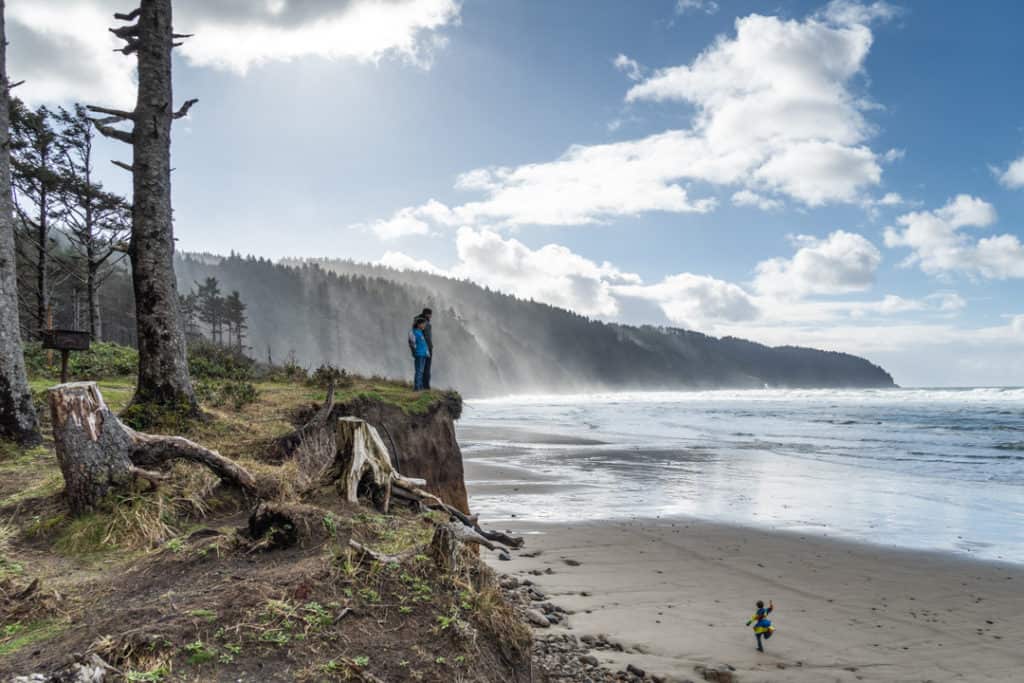
USDA Forest Service Camping in Oregon
The USDA Forest Service also operates locations that provide camping opportunities across the state. You can find RV and tent campgrounds, cabin rentals, as well as many options for dispersed camping.
11 National Forest areas in Oregon allow for camping. You can find camping closer to the coast in Siuslaw National Forest, head into the woods in Willamette or Mt. Hood National Forest, or explore the dryer side of the state in Umatilla National Forest.
Reservation info:
Campgrounds within the National Forest are primarily reservation-based, but some sites may have first-come, first-served options. You can reserve these campgrounds up to six months before your arrival, and most allow booking up to 48 hours in advance.
However, as with State Park Camping, these sites can fill up quickly, so if you’re looking for a particular location or have dates that are set in stone, you’ll want to make your reservations early.
National Park Camping in Oregon
While Crater Lake is technically the only National Park within Oregon, we also have many National Monuments, Historical Sites, Trails, and Preserves.
Reservation info:
You can book sites at the Mazama Campground for camping in Crater Lake. Other sites are available nearby in National Forests and privately owned campgrounds, so if Mazama Campground is fully booked, expand your search a bit and see what you can find.
Pending weather and opening dates, Crater Lake typically opens in June. However, during this month, sites are first come, first served only.
Reservations are accepted in July, August, and September for Mazama Campground and make up the majority of sites. However, they do have some sites available for first-come, first-served, so if you arrive early without a reservation, you may have luck!
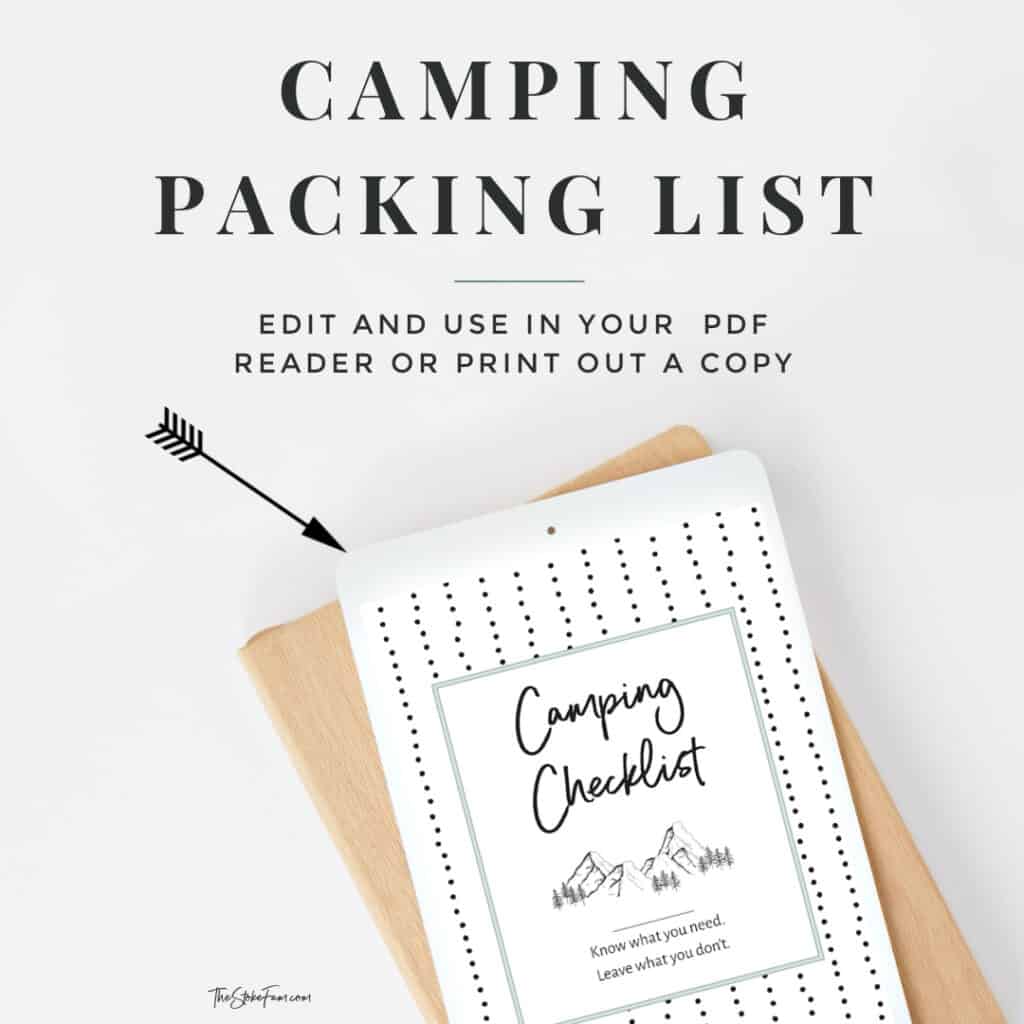
Camping on Bureau of Land Management Properties in Oregon
The Bureau of Land Management (BLM) is another great option when you’re looking for places to go camping in Oregon. BLM public lands have Oregon camping options that vary from established campgrounds to backcountry camping.
Reservation info:
Most of the campgrounds on BLM land are first come, first served. However, a few sites take reservations. Established campgrounds typically require a fee that assists with maintaining the campground. This interactive map is a great way to see the options available.
Dispersed camping is generally allowed on the majority of BLM land. You’ll just need to pay attention to any notifications that the area is closed or restricted. Sometimes this happens to protect wildlife – for instance, during nesting season in certain areas.
There are regulations on how long you can stay in a particular time period and how far away you must move before setting up camp again, but in general, they are very generous. Find out more here.
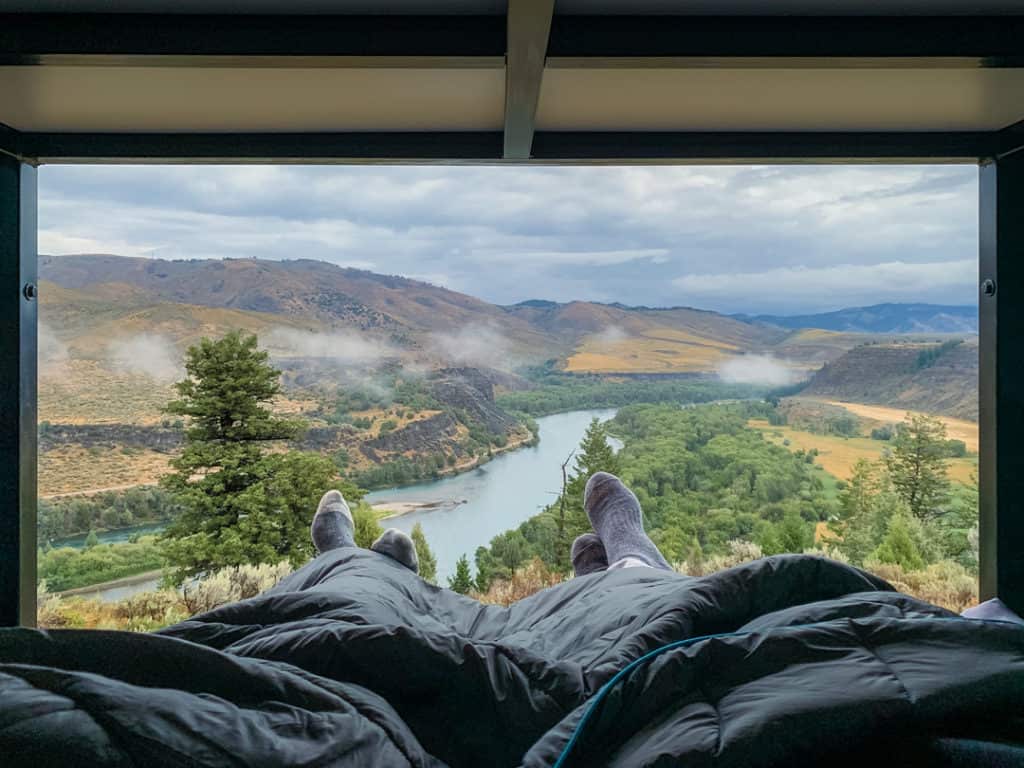
Privately Owned Campgrounds and Land in Oregon
When it comes to finding campsites, aside from the government-run options, there are many more choices for your adventure. While we love a standard campground, sometimes having something more unique is nice.
Over the years, some of our favorite finds were a private campground with animals for the kids to “meet” and a train we could ride around the property and a rest stop (free) where we woke up to incredible views.
Reservation info:
For all the details of how we find unique and free campsite options, check out this post.
Campsites by Region
While there are hundreds of locations to choose for camping in Oregon, I’ve pulled together some suggestions organized by region to get you started on your hunt for the perfect campsite.
Oregon Beach Camping
- Cape Lookout State Park – Cape Lookout State Park is one of our favorites along the Oregon Coast and is one of the best campgrounds for proximity to the beach. It has campsites steps from the sandy shore, bathrooms with flush toilets and hot showers, and miles of trails to explore. The Cape Lookout Trail offers an incredible view of the Pacific Ocean. On clear days, you can see approximately 40 miles into the distance, so it can be a great spot to try whale watching!
- Fort Stevens State Park – If you’re looking for a state park campground with plenty to do, this is it! Aside from the campground, you can play disc golf, explore the historic military site, climb the South Jetty Observation Tower to enjoy the views, and check out a historic shipwreck. Plus, there are miles of trails for biking, running, or walking!
- South Beach State Park – A short distance from the Yaquina Bay Bridge, South Beach State Park is another great option along the coast. Ride bikes or run along the Jetty Trail, play horse-shoe, or explore the nearby freshwater marsh at Beaver Creek Natural Area.
- Wrights for Camping – A family-run tent campground located in Cannon Beach
- Sandbeach – Located in Siuslaw National Forest, this campground is unique due to the almost 1100 acres of sand dunes and is perfect for your off-road vehicles.
- Oceanside RV Park – Located in Gold Beach, Oregon, Oceanside RV Park is a great choice those who prefer a yurt or RV campers with full hookups at 50 campsites.
Related: 13 Best RV Parks on Oregon Coast to Experience on Your Next Adventure
Camping Near Portland
- These campgrounds are some of our favorites for fall camping, but they’re honestly great any time of the year!
- Champoeg State Park – We love Champoeg State Park for it’s close proximity to Portland, but also because there are so many things to do, including bike riding, exploring the historical sites, disc golf, and water activities.
- L.L. Stub Stewart State Park – Open year-round, this campground has two different disc golf courses, almost 30 miles of trails (hiking, mountain biking, and horseback riding), and EV charging stations. You can choose between full-hookup RV sites, walk-in tent camping spots, or cabins. Or, if you prefer to spend the day, head to the day-use area and explore during a day trip from Portland.
- Beacon Rock – While technically in Washington, this campground is the ideal location to explore the Columbia River Gorge. Take in the scenic vistas along the miles of hiking trails or use the boat launch to explore the natural beauty of the gorge on the water.
- Mt. Hood Village Campground – If you’re hoping to explore Mount Hood, this campground is a great option in summer or winter. You can bring your tent or RV to one of the hundreds of available campsites. Or, if you prefer, rent a yurt or cabin as a basecamp for all the outdoor activities nearby. This campground is open year-round and has pools (indoor and outdoor), a fitness center, game room, and more. (Get 10% off your booking at Mt. Hood Village with Dyrt Pro).
Eastern Oregon Camping
- Priest Hole Recreation Site – If you’re up for primitive camping, this is a great place to use as a jumping-off point to explore nearby John Day Fossil Bed National Monument and the Painted Hills.
- Two Pan Campground – This small campground is set up for equestrians with four stock sites near the Eagle Cap Wilderness.
- Lick Creek Campground – Along the Hells Canyon Scenic Byway, this campground is first come, first serve and is open June-September and is equipped with vault toilets, though you’ll need to take your own water as potable water is not available onsite.
- Minam State Recreation Area – Located along the Wallowa River, this Eastern Oregon Campground is a popular place for fishermen and rafters.
- Wallowa Lake State Park – In addition to the large campground (121 full hookup sites, 88 tent sites), Wallowa Lake State Park also has yurts and group sites. Or, if you prefer to visit for the day, the day use area has plenty to keep you busy with a beach, fishing spots, and picnic tables along with stunning views of the Wallowa Mountains.
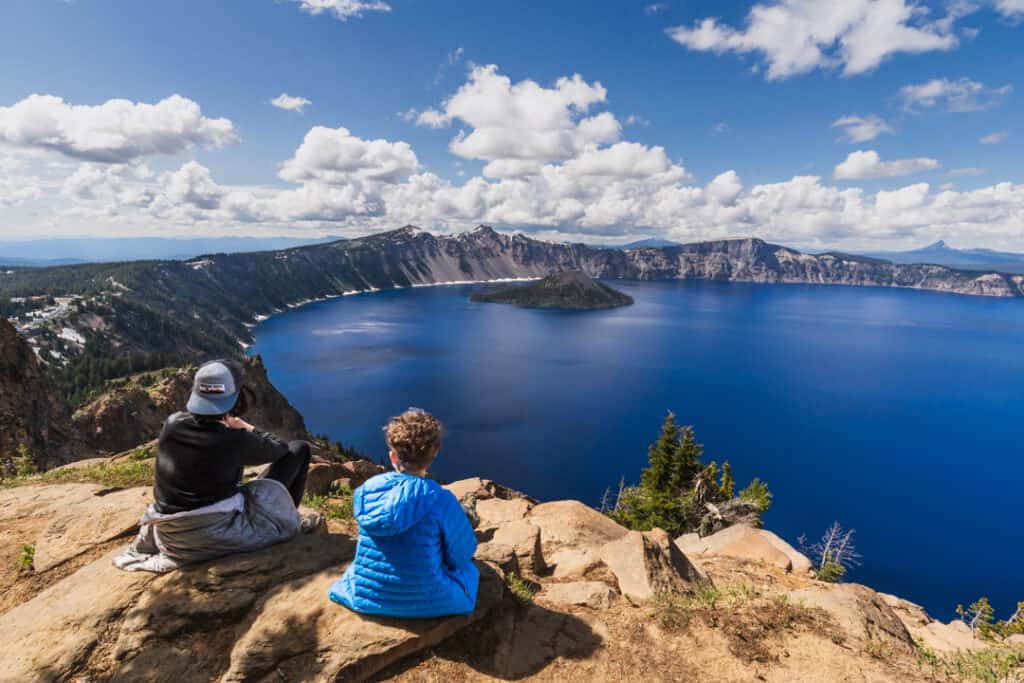
Camping Near Crater Lake National Park
- Mazama Village – One of the two campgrounds at Crater Lake National Park, Mazama Village can accommodate RV’s up to 50 ft in length and hookups are available at some sites. In addition, there are 121 tent sites.
- Lost Creek – An alternate within Crater Lake NP, Lost Creek Campground is a small tent only campground with 16 primitive sites. It’s important to note that wood fires are not allowed, there is no potable water (gas stoves and self-contained charcoal grills are allowed), and toilets are portable. This campground typically opens in July, and there are no advance reservations. (Note: Lost Creek was closed for the entire 2022 season, so we recommend checking before your trip.)
- Natural Bridge Campground – 11 miles from the entrance of Crater Lake, this campground is a great jumping-off point to explore Oregon’s deepest lake. There are 17 first-come, first-served sites at this small campground. There are vault toilets, but you’ll need to bring your own drinking water.
- Diamond Lake Campground – This large campground has 238 campsites (51 of which are lakeside), flush toilets, drinking water, an RV dump station, and showers. Bring your boat to access the lake via boat ramp. Reservations are available from June through Labor Day and then become first-come, first-served until the campground closes (generally October).
- Diamond Lake RV Park – Just 7 miles away from the North Entrance, this RV only park has 110 full hookup sites, laundry room, and showers. In addition, they also have guest cabins and motel rooms. They even have restaurants on-site, so you don’t even have to cook if you don’t want to.
- Broken Arrow Campground – Nestled amount lodgepole pines, this campground has 138 reservable sites along with 3 group sites for larger groups.
- Union Creek Campground – Located in the Rogue River-Siskiyou National Forest, this campground is only 18 miles from Crater Lake. There are both standard and electric RV sites available. Grab a summer treat at the ice cream shop, dinner at the restaurant, or other essentials from the convenience store at nearby Union Creek Resort.
Camping Near Bend
- The Camp – This boutique camping and RV park is located in town with easy access to all the fun activities and restaurants nearby. You can choose to bring your own trailer, rent vintage trailers, or stay in a tiny cottage.
- Cove Palisades State Park – This central Oregon campground is open for day use all year and camping season runs from March-October. Popular activities are swimming, paddling, boating and hiking.
- Driftwood Campground – Located in Deschutes National Forest on Three Creek Lake near Sisters, Driftwood Campground is a quiet campground for tents. There is no potable water, but all sites have a table, fire ring, and there are vault toilets. Nestled among old-growth forest, this alpine lake is only available to non-motorized boats and all tent sites are in a prime location alongside the lake.
Unique Campsites in Oregon
- Tiny Tranquility – If glamping is more your style, Tiny Tranquility is the way to go! They have adorable Tiny Homes and Vintage RV’s that are well-appointed to keep you comfortable.
- Burns RV Park – Explore Oregon’s high desert at a tent or RV site OR book your own cabin or teepee!
- LOGE Bend – Okay, okay. I know. This isn’t really a campground, but it’s almost like camping (I mean they have hammocks in the rooms and Traeger Grills in the BBQ area so it counts, right?!), and it’s so unique I had to include it.

Frequently Asked Questions About Camping in Oregon
Current Status Links
Access to many national, state, and local campgrounds can change for various reasons. Even though most locations have opened back up after COVID-19, other reasons, such as staffing shortages, facility updates, and fire restrictions, may still cause closures. Therefore, I highly recommend you check the following links before heading out on your camping trip.
- Oregon State Parks
- Oregon Department of Forestry
- Forest Service
- National Park Service
- Bureau of Land Management
Final Thoughts on Camping in Oregon
Whether you prefer a full-service campground or the solitude of the backcountry, Oregon is home to some of the best camping in the United States.
While booking the best campsites in Oregon can be challenging due to their popularity, there are always options to find among the hundreds of campgrounds in the state. If you’re willing to do a little bit of research, even if you can’t book your top pick, there are always incredible campsites to explore.


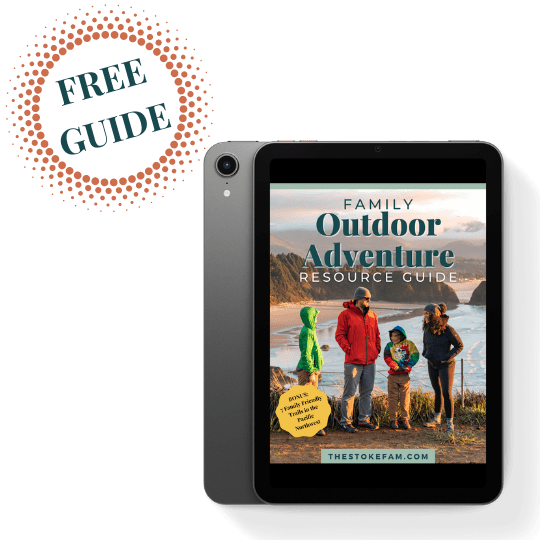
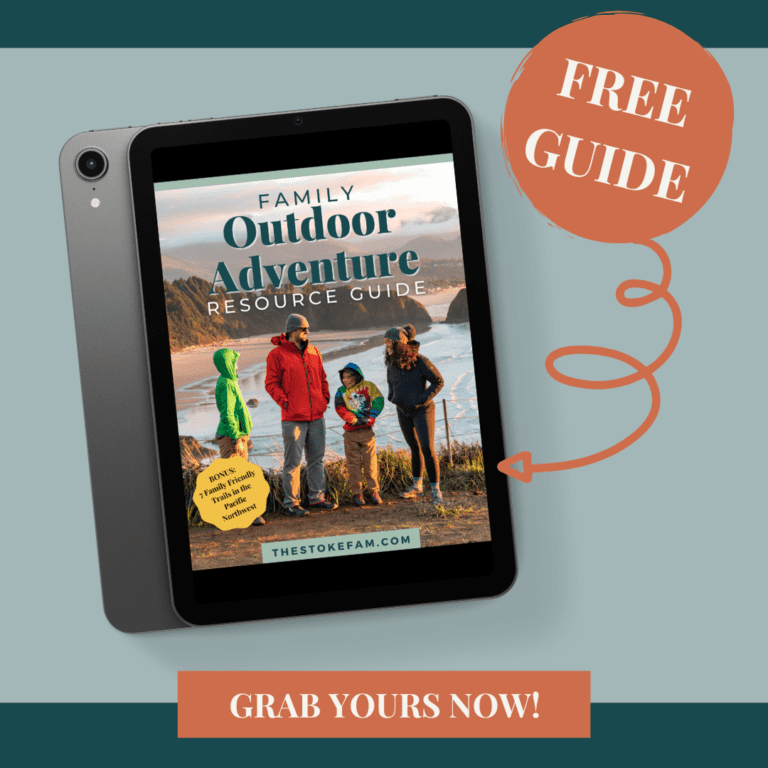
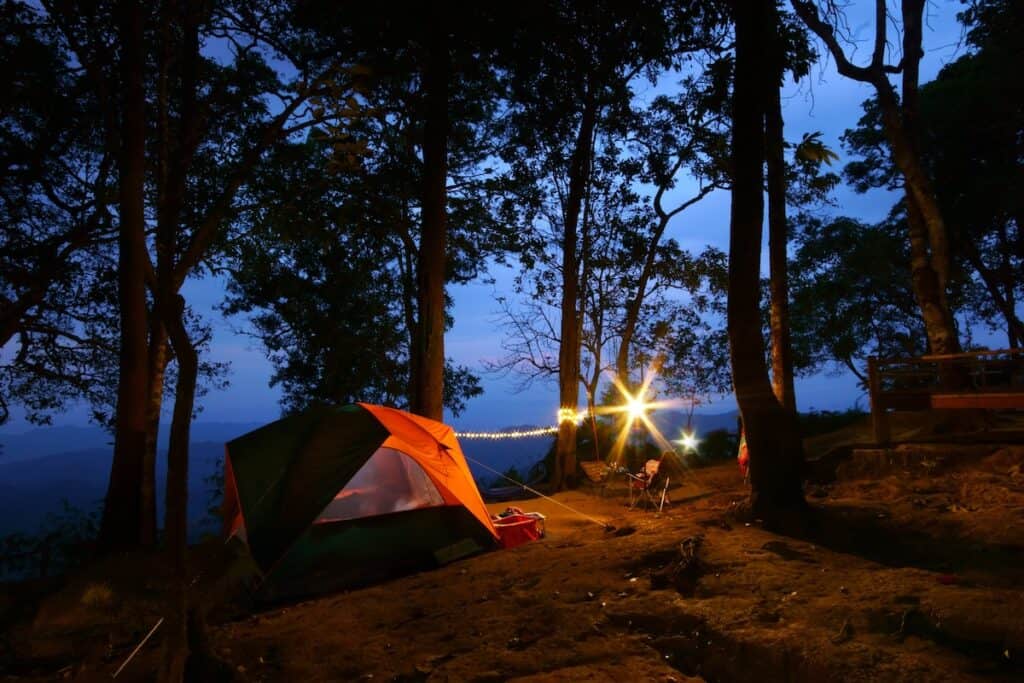
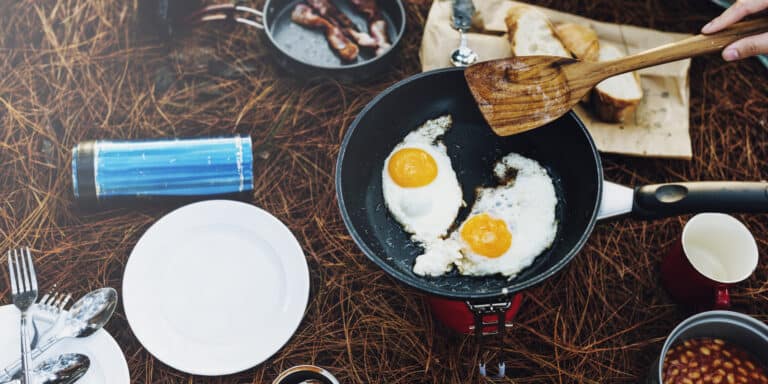
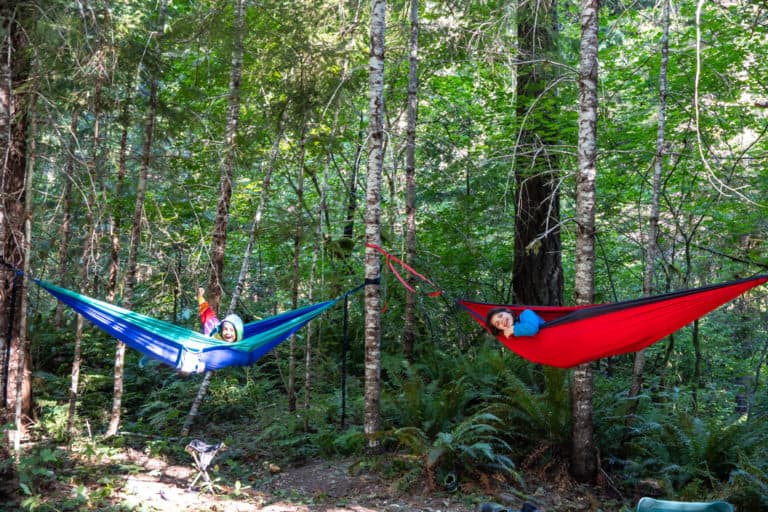
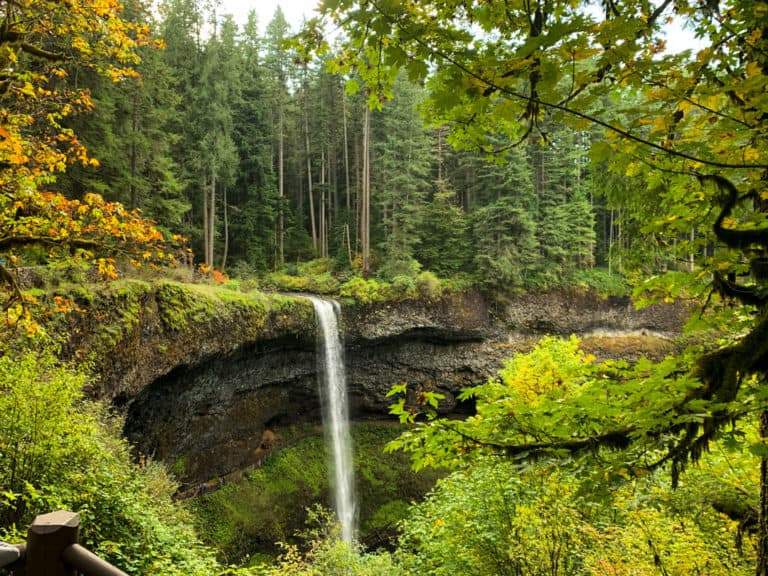
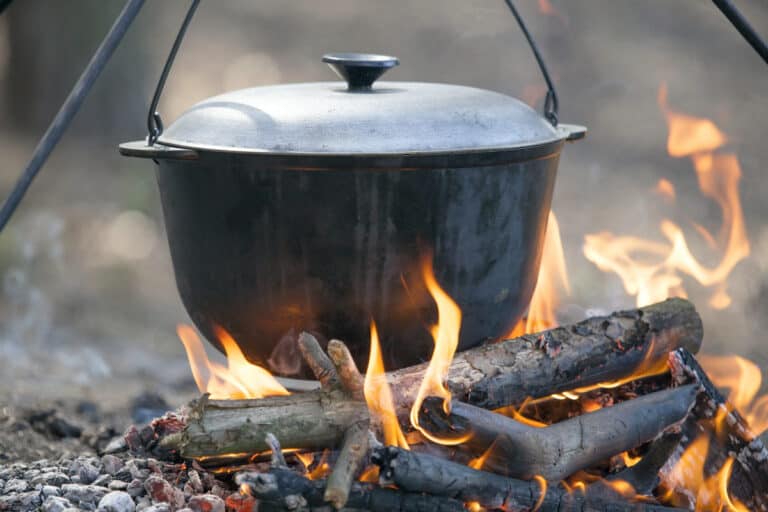
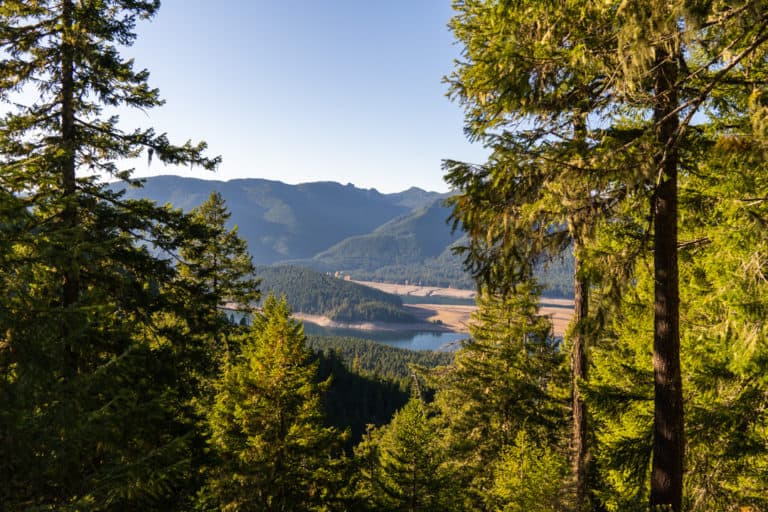
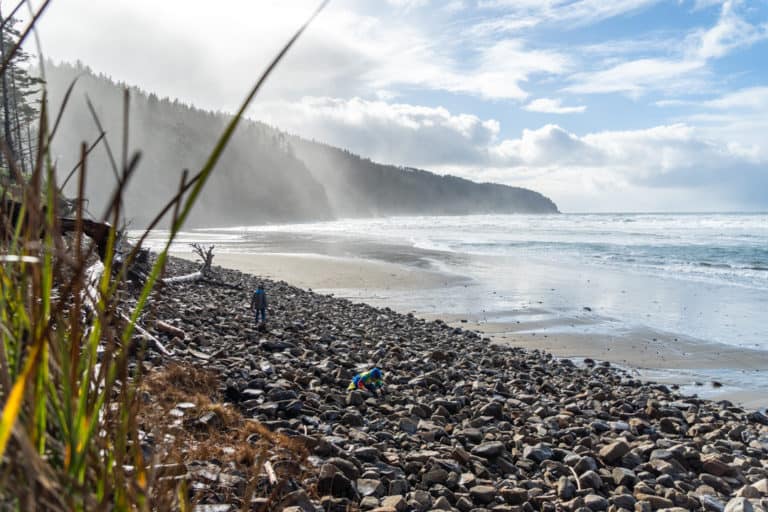
This was so helpful! We love Oregon and we love camping- we just need to combine those two. 🙂 That is awesome that there is FREE camping there! That just doesn’t exist in CA, so I’m definitely going to look into that.
Awesome! You guys will totally have to give it a try sometime. The free camping is usually primitive, but it’s great to have the option! 😉
Thank you so much for this inspiring post! We usually stay in hotels and apartments, but while reading your post I thought; it would be great to do glamping in Oregon once! It looks so beautiful!
You’re so welcome! I hope you guys are able to do exactly that at some point!